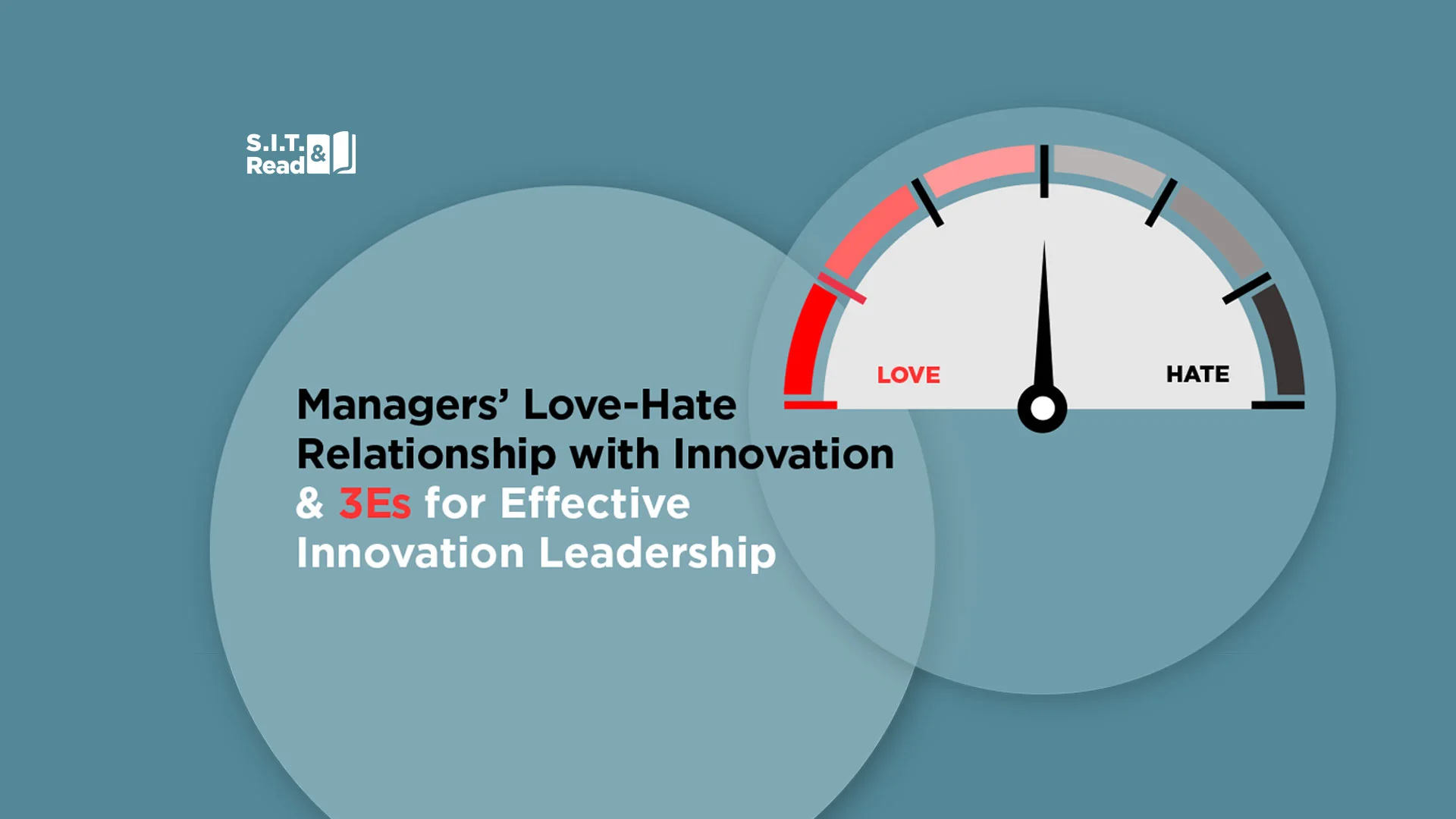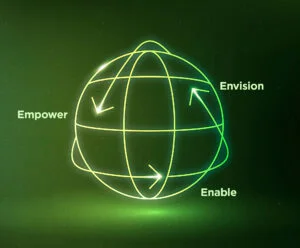Managers’ Love-Hate Relationship with Innovation and 3Es for Effective Innovation Leadership


When implementing any strategy in the company, you’ve got to have leadership support at the forefront. Innovation strategies are no different. And while companies are, one after another, placing innovation at the top of their values and agenda, managers often experience a conflict of interest rolling out this strategy. It appears they have good reason to feel this way.
On the one hand, leaders are expected to enable change and disruption, while on the other hand maintain operational excellence and continuity. They are required to design, plan and monitor the long-term without compromising deliverables in the short-term. They are encouraged to stimulate an exciting environment but at the same time retain stability. They are challenged to build teams characterized by flexibility and improvisation but simultaneously operate under well-defined roles and processes. They need to be clear and assertive about their way of leading, while adapting to the specific characteristics of their team. 

This is the paradox involved in leading innovation – injecting the “new” while keeping (or making it the new) routine. It’s invigorating for management to be given the innovation mandate, but understandable for them to approach with caution given all the demands made on them. What we’ve found has helped leaders overcome this paradox, is to utilize the 3E model by Nadler and Tushman with a focus on innovation: Envision, Enable, and Empower. As a leader, sketch out the model and answer the following questions based on your particular role; the characteristics of your team and its place in your organization’s structure; and your innovation goals (whether set by you or higher up).
Envision: Your Innovation Dream
Envision the future: Imagine and clearly describe the destination. What is the vision for your team/unit/department? Describe your “team of the future”. First, be the change you want to see in the world – Get in touch with your inner Ghandi and be the change you want to see in the company. What are your strengths, drive, and sources of authority? How can you serve as an innovation role model?
Transformational Moments – Leverage opportunities that arise in day-to-day work as an engagement tool for inspiration. How can you take advantage of routine events to create strong connections to the future vision and make it feel attainable even today?
Enable: Your Innovation Framework
Failures and successes as opportunities for growth: Humans (and corporations) are inherently risk-averse and innovation is often risky. How can you encourage yourself and your team to take risks? How do you assess risk? How can you build tolerance to ambiguity into your team and develop methods to mitigate risks?
Cultivate an innovation environment: Part of leading innovation is creating the right climate that enables it. How do you build the right teams and motivate them? What assurances need to be put into place that will encourage reciprocal trust? How can you instill courage to try new approaches (and that it’s ok to sometimes fail)? What mechanisms need to be established to ensure transparent and sincere communication (downwards and upwards), active listening, and openness?
Resistance to change: People say they love change. Most don’t. Innovation demands change, and so, will inevitably generate resistance. Being sensitive to resistance (whether it comes from colleagues or other stakeholders) is crucial to enabling innovation to happen. What types of resistance do you expect to encounter and from whom? Which types can be nipped in the bud and how? Who do you expect will need ongoing reassurance and how do you plan to win them over?
The Lab: Life is all about experimenting. Labs are also for non-scientists, and experiments are not conducted only in R&D. How and where can you create a space where your team can switch from talking to doing? What would be your parameters, guidelines, and budgeting for experimentation, rapid-prototyping, and creating MVPs?
Models for sustainable innovation: Each unit is different in terms of culture, goals, people, etc., yet there some universal ingredients required to sustain innovation in any team. What mechanisms do you need to put into place to ensure that innovation continues to thrive over time? What people and roles need to be identified? Which additional skills do you need to provide to your team through training?
Empower: Put your team on the path for personal success
Nurture your team’s creative spark: Build on your team members’ passions and strengths to get them to contribute to your project or encourage them to lead one of their own. What incentives will motivate your team? How can you influence them team to act in novel ways? What individual and collective strengths can you leverage?
Cultivate champions: Each team or organization has a few outstanding “champions” (talents) that add extra value. How do you identify these champions? How and what should you invest in them? What should their role/s be? Which conditions can maximize the potential and contribution of each champion?
Challenge assumptions: Review and challenge the status quo: Which methods, processes, behaviors and assumptions are deemed as “fixed”? Which may not be relevant today? How can you provoke them to promote change and imagine opportunities to do things differently?
Sketching this model out, and candidly answering the questions for each E, will produce the blueprint leaders need to effectively lead innovation and instill innovation in leadership. Constant examination of the blueprint will be the reality check to achieve the vision that is so desired, while not compromising on executional excellence.
Image of eyeglasses, touchpads and pen at workplace with group of businesspeople on the background
Recent Posts
Innovation Behavior
Innovation is a skill, not a gift. Top organizations drive growth by nurturing and investing…
Should you learn TRIZ? – Yes. ….and No.
Are you in the world of problem solving? Is problem solving a skillset you have…
What Lies Ahead in 2024?
5 Data-Driven, Customer-Centric trends we’ve identified This is not just another conventional forecast. Over nearly…
Fork or Chopsticks – Which Innovation Tools Do You Use?
Imagine a chef, who only uses a spoon. Imagine a dentist, who only uses a…
The Moat Mentality: Exploring New Frontiers in Innovation Methodologies
In investing and business strategy, we often speak in terms of moats. Warren Edward Buffett…
Was it a Breakthrough or an Adjacency?
This year, P&G’s Febreze celebrates its silver anniversary as a brand. But not all 25…



View Comments
Your article helped me a lot, is there any more related content? Thanks!
Thank you for your sharing. I am worried that I lack creative ideas. It is your article that makes me full of hope. Thank you. But, I have a question, can you help me?
Thank you for your sharing. I am worried that I lack creative ideas. It is your article that makes me full of hope. Thank you. But, I have a question, can you help me?